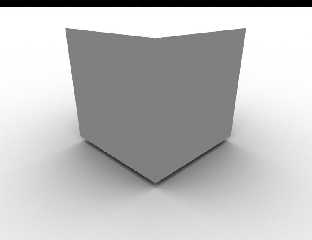The results of yet more thievery; this time I filched some of Mael's MegaPOV
code to get access to a low-discrepancy sequence of numbers (Halton series).
This reduced the noise for a given number of samples, although at present
I'm unable to quantify by how much. I also applied a minor modification so
that the user can control the maximum angle between the normal and the
direction of sample rays.
The images shown before correspond to a maximum angle of 90 degrees, so that
rays are shot into a hemisphere. Reducing the angle tightens the shading,
enhances the contrast (because surfaces close to the local horizon are
sampled less or not at all) and potentially allows you to reduce the number
of samples while keeping the same noise level in the hemispherical case; or
to reduce the noise for the same number of samples.
The attached image was rendered using Mael's samples with a maximum angle of
90 degrees, like the previous images. It took about 80 seconds to render at
800x600 (I cropped it). The same scene with one light and basic diffuse
finish renders in about 2-5 seconds, so although it's impossible to
estimate speed in absolute terms, you can see that the occlusion is
certainly very weighty compared to lambert. It will only get slower with
increased geometry. I chose a simple box as the shadow underneath will
clearly show the effect of changing the max sampling angle.
Post a reply to this message
Attachments:
Download 'variangle_90deg.jpg' (22 KB)
Preview of image 'variangle_90deg.jpg'

|




![]()